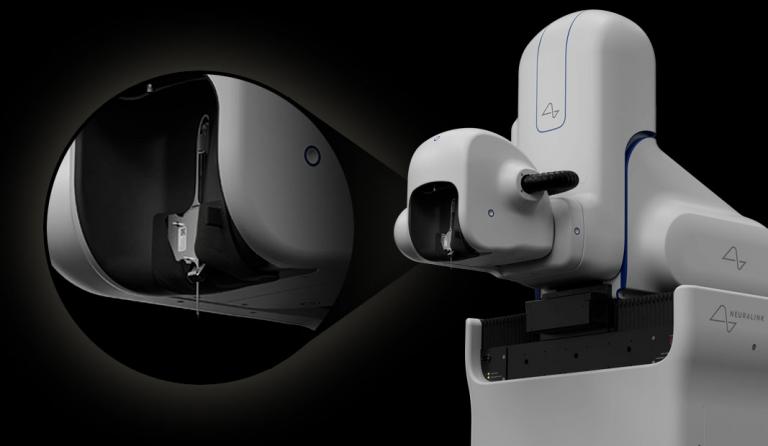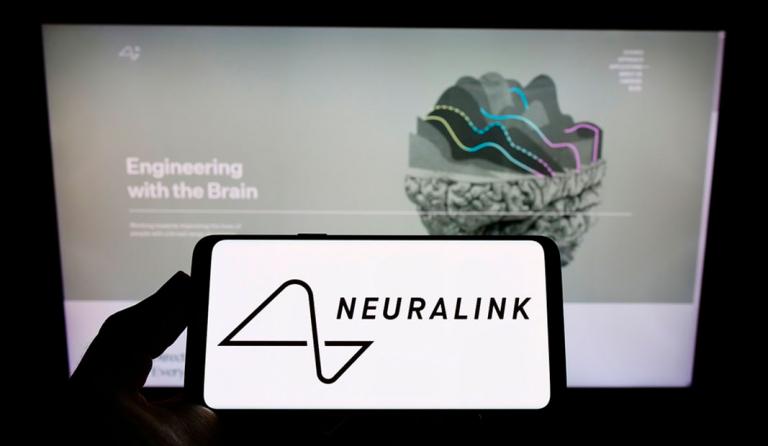Photo: Neuralink.com
The Black Mirror series shows a future society that is disturbingly familiar, as if the technology that surrounds the characters already existed and its creators were just waiting for the right moment to convince us that it is not possible to live without it, as has already happened with the smartphones and other smart devices that know our tastes and needs. Well, as if it were a new episode of the series, Elon Musk has announced that he has implanted the first microchip of his startup Neuralink – which he has named Telepathy – in a human brain.
“A first human received a Neuralink implant this Sunday and is recovering well. “The initial results show promising detection of neuronal spikes,” Musk explained through X, but he has not offered any data about the patient, nor is there any scientific publication that supports his statement.
Table of Contents
- What the Neuralink Telepathy brain implant is like and what it is for
- Possible medical applications and uses of the Neuralink chip
- Potential Brain Chip Risks
What the Neuralink Telepathy brain implant is like and what it is for
Elon Musk founded the company Neuralink in 2016 with the goal of developing a brain-computer interface, which consists of a chip that is surgically implanted in the brain and is designed to record and decode neural signals and transmit the information through electrical stimulation. Its efficacy and safety began to be studied in animals – mice, pigs, sheep and non-human primates – and, in May 2023, it received authorization from the United States Food and Drug Administration (FDA) for its first clinical trial in humans. , as announced by the company itself in its account Twitter (now X).
It is not the first device of this type, since other companies such as Blackrock Neurotech and Synchron have implanted similar ones in people for clinical trials, and at least 42 people around the world have received brain-computer implants, as indicated in an article in The Washington Post. A recent study also showed that a patient with Parkinson’s and movement difficulties had managed to walk normally again thanks to a surgically implanted neuroprosthesis that stimulates his spinal cord.
However, Telepathy, as explained by Cajal Institute scientist Liset M de la Prida to the newspaper El Mundo, is considered pioneering for several reasons, among which stands out that it has a smaller size – “a leader in miniaturization.” – and can read information from a greater number of neurons than previous chips.
The spikes that Musk refers to “are activity of neurons, which the National Institute of Health describes as cells that use electrical and chemical signals to send information to the brain and body,” they explain from the Reuters agency. In the study, they used a neurosurgical robot to insert a brain-computer interface (BCI) implant into an area of the brain that controls movement with the initial goal of allowing people to be able to control the cursor or keyboard of a device. computer through your thoughts.
This robot has placed an interface made up of 64 flexible threads thinner than a human hair that contain 1,024 electrodes that record brain activity and send the information to the coin-sized brain chip surgically inserted under the skull. The intervention lasts around 25 minutes. The cables are “so thin and flexible that they cannot be inserted by the human hand,” according to Neuralink’s website.
The intention is that the electrodes connect to the brain using laser technology, and that externally the wires end in a kind of switch that is placed behind the ear (similar to hearing aids) and that through Bluetooth or USB it can be connect with mobile. All of this would be charged wirelessly, thanks to a charging station that would be placed under the pillow, so that the entire network in the brain is recharged while we sleep.

Possible medical applications and uses of the Neuralink chip
At Neuralink they state that their mission is “to create a generalized brain interface to restore the autonomy of those who have unmet medical needs today and unlock the human potential of tomorrow.” “Our brain-computer interface is fully implantable, aesthetically invisible and designed to allow you to control a computer or mobile device wherever you go,” they explain.
They also report that they are currently focused on providing people with tetraplegia with the ability to control their computers and mobile devices with their thoughts, and add that in the future they hope to be able to restore abilities such as vision, motor function or speaks.
Beyond the field of health, Elon Musk proposes a future with Neuralink in which commercial interfaces are developed that allow us to manage our mobile phone or computer only with our mind, “like a Matrix”, they indicate on the company’s website and They assure that, in fact, the film has served as inspiration for their engineers.
“Imagine if Stephen Hawking could communicate faster than a typist or an auctioneer. “That’s the goal,” Musk commented on Xwhere he highlights that the first users will be those who have lost the use of a limb, but that Telepathy will also allow any electronic device to be used solely with thought.

Potential Brain Chip Risks
“Every advance is a double-edged sword,” they warned from the CSIC when Musk presented the advances achieved by Neuralink in 2020. And they pointed out that “nothing was said at the event about the complications of implanting a foreign electronic body in the brain; a watery and corrosive medium par excellence. Nor of the defense mechanisms that protect us and that will necessarily form a glial scar in the gray matter of pigs and men, encapsulating electrodes and promoting infections, regardless of the species. Nor was the associated ethical aspects discussed, which we all have to protect. And much less is it mentioned that this is nothing more than a milestone on a path that is impossible to walk alone because the nature of the challenges, questions and consequences overflow in all directions: curing depression, manipulating consciousness, editing memories, they are big words.”
Musk has not yet given any explanation in this regard, and what would we think if a scientist – who he is not – announced, for example, that he had restored sight to a blind man, without explaining the circumstances of his blindness, nor the characteristics of the condition? patient, nor how he has done it, nor will he provide scientific data to support his work? He probably wouldn’t be given any credit. For the moment, it seems more prudent to consider Elon Musk’s announcement as an advertising strategy.














